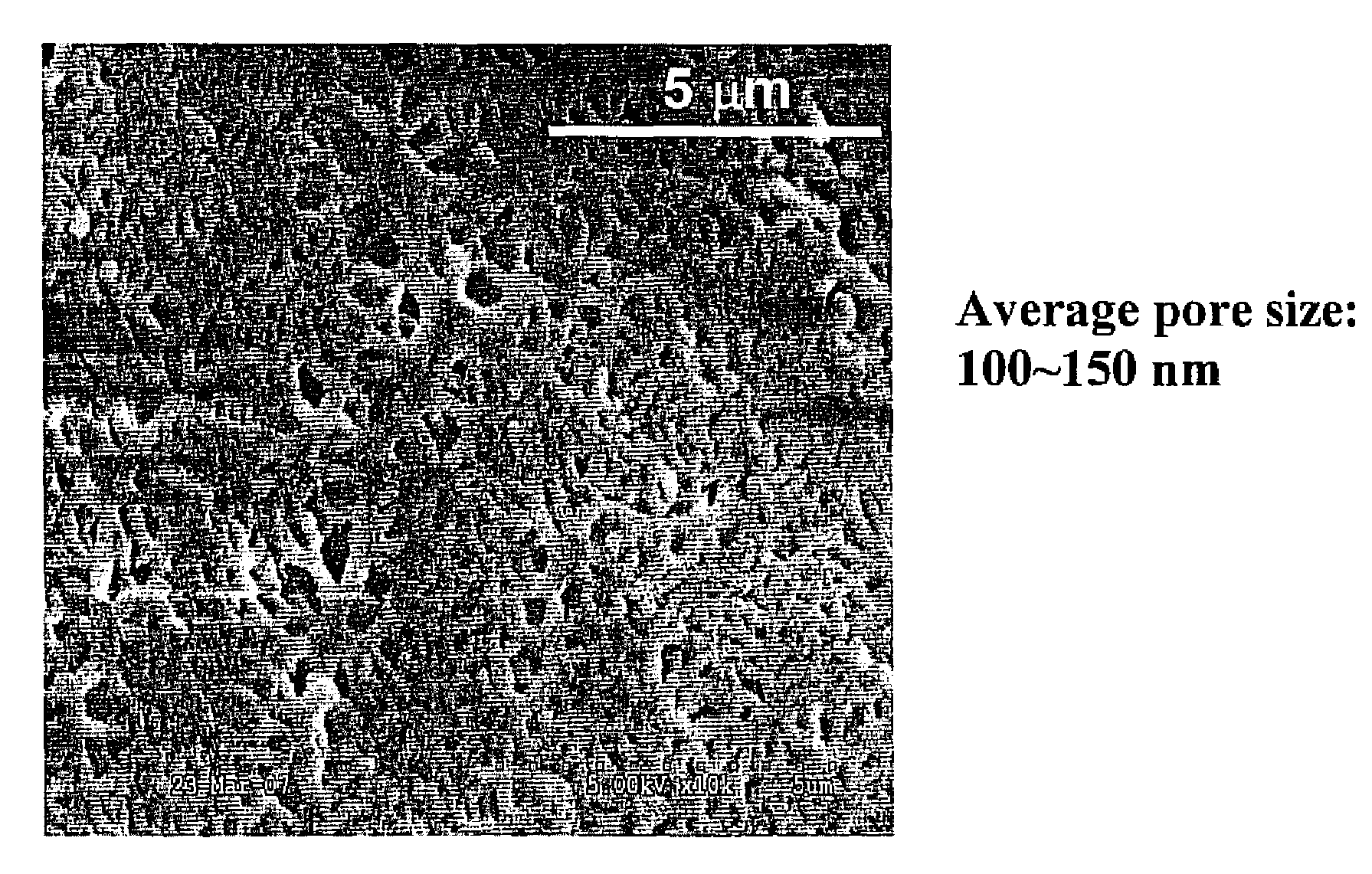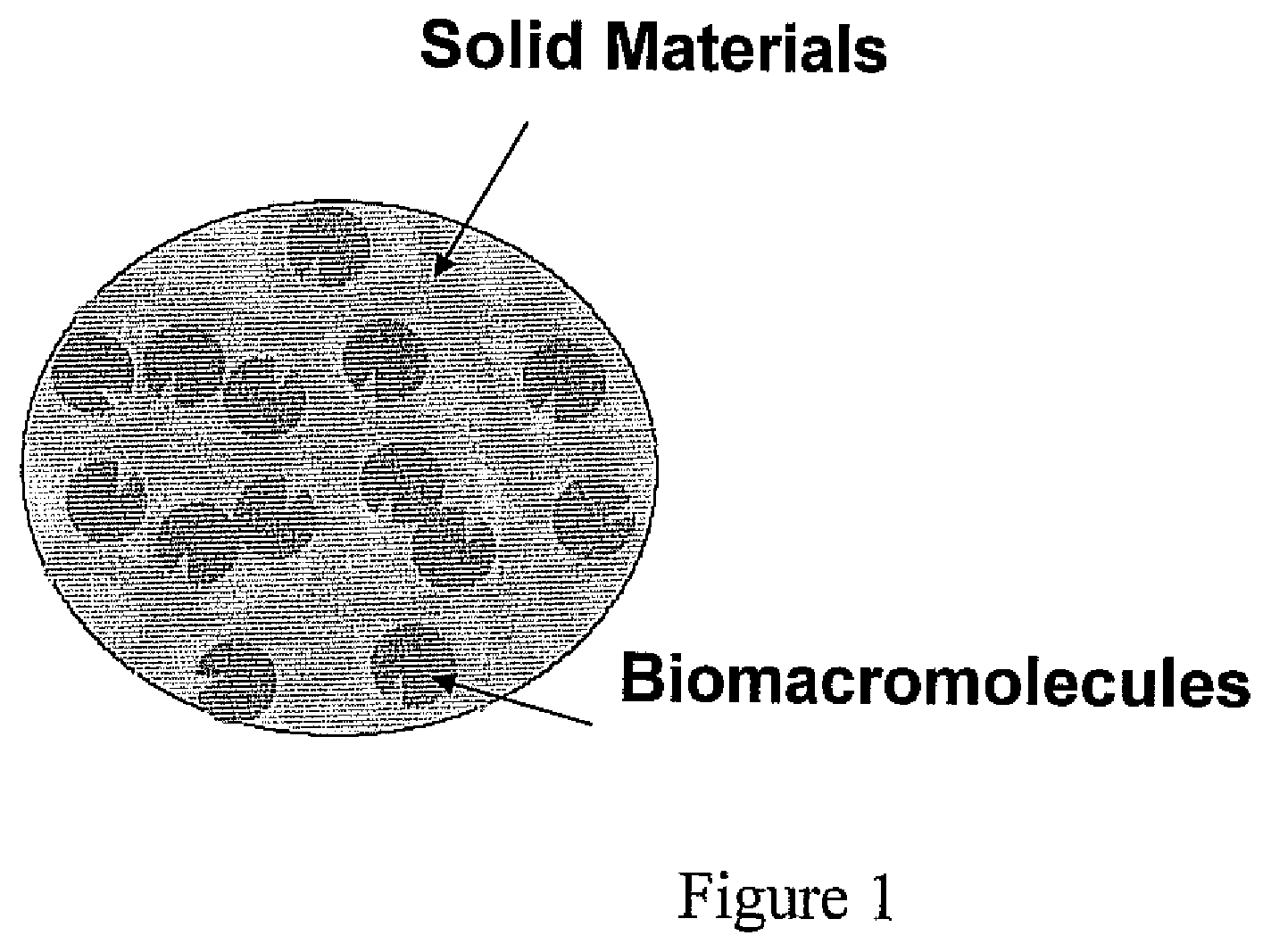Heat resistant bioactive composition
a bioactive composition and heat resistance technology, applied in the direction of peptide/protein ingredients, on/in biological cells, enzymology, etc., can solve the problems of damage to the paint surface of vehicles, interior surfaces and coatings may also be easily stained, and certain stains such as insect-originated stains are difficult to remove with ordinary brush-free car wash, etc., to reduce the water content within the pores of the hydrogel matrix
- Summary
- Abstract
- Description
- Claims
- Application Information
AI Technical Summary
Benefits of technology
Problems solved by technology
Method used
Image
Examples
example 1
Entrapment of Glucose Oxidase (GOx) into Polyacrylamide Hydrogel
[0047]An exemplary protein, glucose oxidase (GOx, 5 mg) is dissolved in 2 ml of 0.1M pH 7.0 sodium phosphate buffer, and then mixed with 1.2 ml of deionized water, 100 μl ammonium persulfate (10% w / v in DI water) and 6.8 ml of 30% acylamide / bis solution (purchased from Bio-Rad Laboratories). Hydrogel polymerization is initiated with the addition of 4 μl of NNN′N′-tetramethyleethylenediamine (TEMED) at room temperature. The hydrogel solution is added carefully into a glass enclosure (8.3×7×0.075 cm3) using the pipette and kept for at least 4 hours to allow the polymerization to complete. The protein containing hydrogel is punched into small discs with a diameter of 16.2 mm, which are rinsed and dried for further use.
example 2
Activity Assays for Native and Hydrogel-Entrapped Glucose Oxidase (GOx)
[0048]Activities of native or hydrogel-entrapped GOx are measured by using a two-coupled reaction at the room temperature:
[0049]
[0050]GOx catalyzes the oxidation of β-D-glucose, which produces gluconolactone and H2O2. H2O2 further reacts with o-dianisidine (reduced form) and releases a product (oxidized o-dianisidine) that is monitored on a spectrophotometer at a wavelength of 500 nm. Reduced o-dianisidine, in the presence of peroxidase, will transform to the oxidized counterpart, producing a color that is measured at 500 nm by Cary 50 Spectrometer.
[0051]To measure the native GOx, a reaction mixture (1.1 ml) contains 0.1 mol glucose, 7 μg horseradish peroxidase, 0.17 mM O-dianisidine, and 35 μl enzyme (0.4-0.8 unit / ml) in 50 mM pH 5.1 Sodium Acetate Buffer. On the other hand, to measure the activity of hydrogel-entrapped glucose oxidase, the dried hydrogel disc is immersed into deionized water for at least 2 hour...
example 3
Increased Thermal Stability Observed with Glucose Oxidase (GOx) Entrapped in Polyacrylamide Hydrogel
[0053]Improved thermal stability is observed in the case of entrapped GOx in comparison to free GOx. The analysis of thermal stability is carried out in a temperature-controlled oven. The hydrogel-protein discs are incubated at 80° Celsius for various times and their residual activities are measured following the protocol described in Example 5. The stability of native dry protein is also tested as control.
PUM
| Property | Measurement | Unit |
|---|---|---|
| water content | aaaaa | aaaaa |
| temperature | aaaaa | aaaaa |
| half-life time | aaaaa | aaaaa |
Abstract
Description
Claims
Application Information
 Login to View More
Login to View More - R&D
- Intellectual Property
- Life Sciences
- Materials
- Tech Scout
- Unparalleled Data Quality
- Higher Quality Content
- 60% Fewer Hallucinations
Browse by: Latest US Patents, China's latest patents, Technical Efficacy Thesaurus, Application Domain, Technology Topic, Popular Technical Reports.
© 2025 PatSnap. All rights reserved.Legal|Privacy policy|Modern Slavery Act Transparency Statement|Sitemap|About US| Contact US: help@patsnap.com



